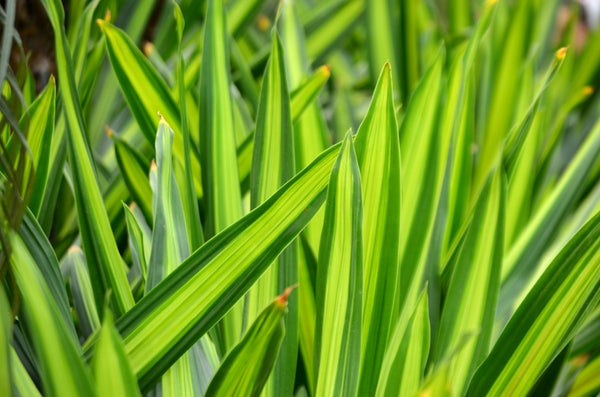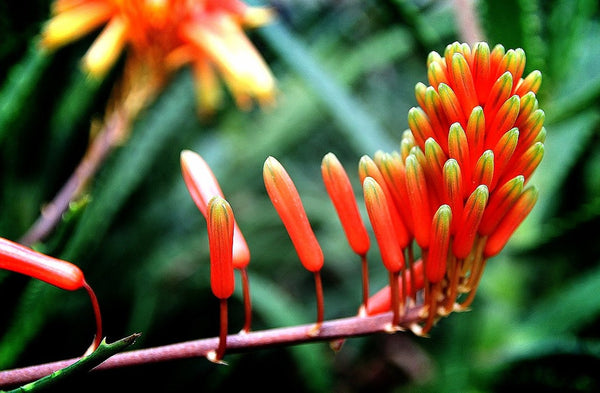Tropical Plants: How to Transition Indoors

Last updated: May 30 2019

As temperatures drop down into the 50-degree range and below, it’s about that time to move tropical plants indoors for the colder months. By following the simple steps below, your plant’s indoor transition will be fuss-free.
Moving Your Tropical Plants Indoors
It’s important that your indoor tropical plants are kept in proper containers. Containers with holes in the bottom to allow drainage are best. If your container doesn’t have drainage holes, they can easily be added with a drill.
Gradually make the transition from outside to inside over one to two weeks. By taking your plant and placing it in the shade for a few hours each day, the transition will be much easier on your tropical plants.
It’s also important to avoid bringing critters inside with your plant. Carefully inspect your plant for any signs of bugs. If you see any insects, wash the leaves and branches with organic insecticide soap before bringing your tropical plants inside.
You can also wipe the leaves and branches on your plant clean with a warm cloth. This removes any pollen or dirt that you don’t want to bring inside with your plant.
Arguably one of the most vital steps: Place your tropical plants in the right spot. They will need a lot of light, so placing them by a large sunny window is best. Generally, windows facing towards the East and South receive the most light. Avoid placing your plant near an area that gets cold drafts from opening and closing doors.
Also, ensure that you have a saucer prepared to sit under your plant’s container to catch draining water and soil from the bottom of the pot.

Indoors Care
Know how much water your plant enjoys. Once it’s inside, some tropical plants like to dry out between waterings and others like it when their soil is kept moist. Research your plant’s water requirements and be careful not to overwater.
If the leaves on your plant are turning a dark shade of brown or black and droop, this is a sign of overwatering. Signsof under-watering include leaves turning brown at the tips, turning brown fully and curling upwards, and yellowing leaves towards the bottom of the plant.
Regarding watering requirements, make sure you give your plants room temperature water. Any colder water may shock your plant.
During a spell of dark, cloudy days, consider giving your tropical plants supplemental light with a grow light. The grow light should be used for 3 to 4 hours a day, and the light should be filtered and not pointed directly at your plants.
And if your tropical plant is a humidity-loving one, you can increase the amount of humidity in a dry room by misting your plant with a spray bottle once or twice a day. You can also provide humidity for your plants by placing their container over a shallow tray filled with rocks and water. Make sure that the roots aren’t touching the water, though.
Most of all, don’t fret over leaf drop. When a plant changes climates, it is natural for it to drop a few leaves in order to conserve energy. Changes in lighting, temperature and cold drafts can cause leaf drop. Once your plant realizes that it isn’t in danger, the leaves will grow back.

Protection
Protect your plants from your pets. Keep dogs from eating your plants by placing them up high, out of the dogs’ reach. Training them to avoid your plants is also possible, but a quick solution is spraying your plants with a solution of lemon juice and water to make them undesirable.
Keep cats away from your plants by putting them up high, out of their reach. Misting the leaves with a lemon juice and water solution and placing orange peels in the soil are also quick solutions to protect tropical plants. Also, keep cats out of your plant containers by covering the soil with gravel.
Dormant Plants
In order to keep a plant that goes dormant inside during the colder months, wait for all of its leaves to drop before bringing it inside. Once the leaves have dropped, store the plant in a cool, dark room that stays around 50 degrees, like a garage or shed. If they are in a warmer, sunnier area, they might break dormancy and flower too early.

Furthermore, dormant plants don’t need as much water as evergreens during the winter. Give them a bit of water once every week or two to make sure that their soil doesn’t dry out completely.
Once spring rolls around, gradually give your plant more sunlight and water so it will awaken from its dormant state.

Written by
Blair Brown
Blair is the Content Marketing Manager at FastGrowingTrees.com, and though she's not your traditional gardener, the planting world is definitely growing on her (pun intended!). She's enjoyed digging into plant care and maintenance and growing her plant collection, especially with exotic indoor varieties.












